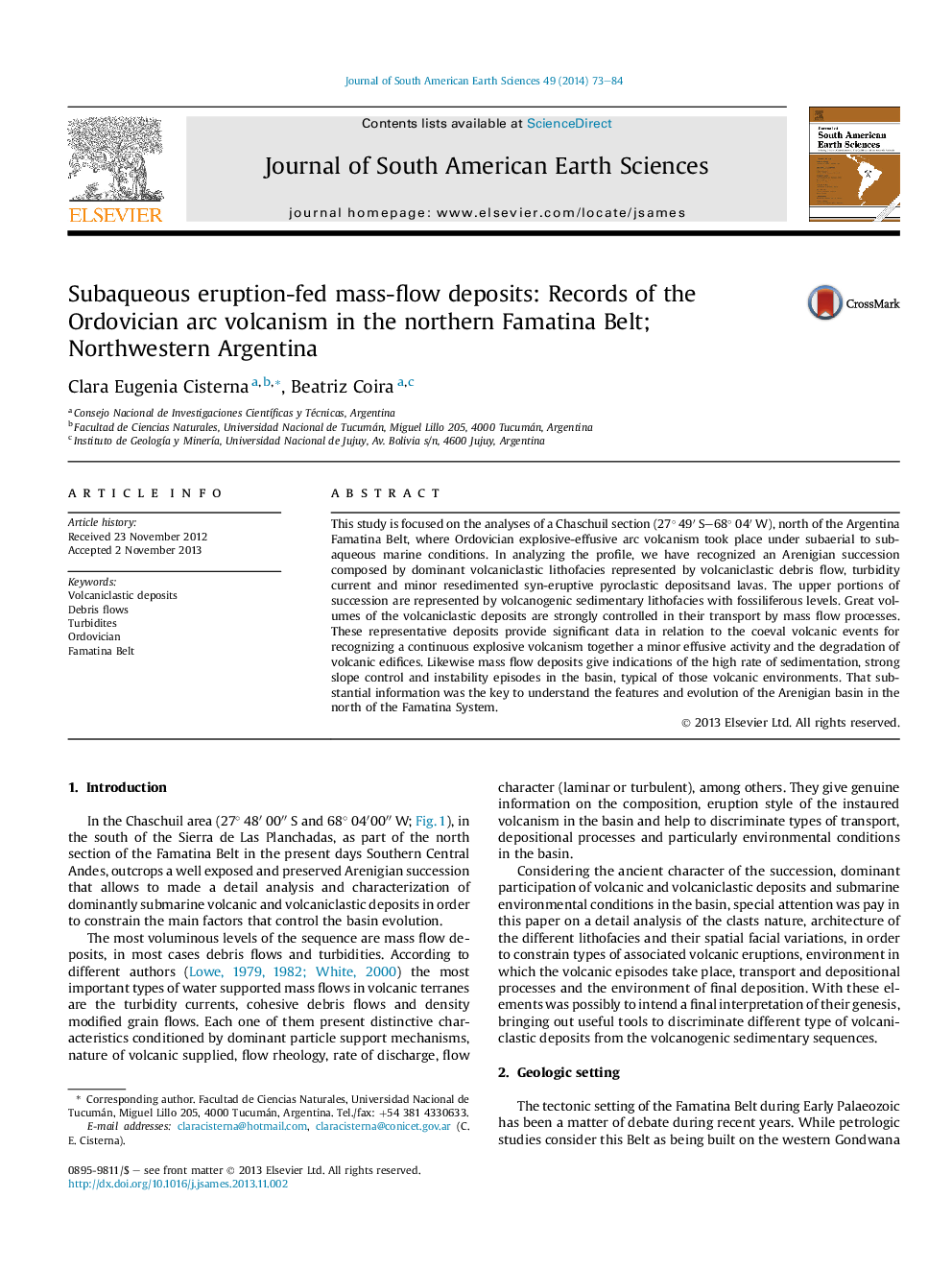| Article ID | Journal | Published Year | Pages | File Type |
|---|---|---|---|---|
| 4682361 | Journal of South American Earth Sciences | 2014 | 12 Pages |
•Ordovician effusive – explosive arc volcanism under subaerial to subaqueous marine conditions.•An Arenigian volcanic and volcaniclastic succession.•Lavas and volcaniclastic lithofacies.•Great volumes of pyroclastic rich debris flow and turbidity current deposits.•Volcanogenic sedimentary lithofacies with fossiliferous levels.
This study is focused on the analyses of a Chaschuil section (27° 49′ S–68° 04′ W), north of the Argentina Famatina Belt, where Ordovician explosive-effusive arc volcanism took place under subaerial to subaqueous marine conditions. In analyzing the profile, we have recognized an Arenigian succession composed by dominant volcaniclastic lithofacies represented by volcaniclastic debris flow, turbidity current and minor resedimented syn-eruptive pyroclastic depositsand lavas. The upper portions of succession are represented by volcanogenic sedimentary lithofacies with fossiliferous levels. Great volumes of the volcaniclastic deposits are strongly controlled in their transport by mass flow processes. These representative deposits provide significant data in relation to the coeval volcanic events for recognizing a continuous explosive volcanism together a minor effusive activity and the degradation of volcanic edifices. Likewise mass flow deposits give indications of the high rate of sedimentation, strong slope control and instability episodes in the basin, typical of those volcanic environments. That substantial information was the key to understand the features and evolution of the Arenigian basin in the north of the Famatina System.
